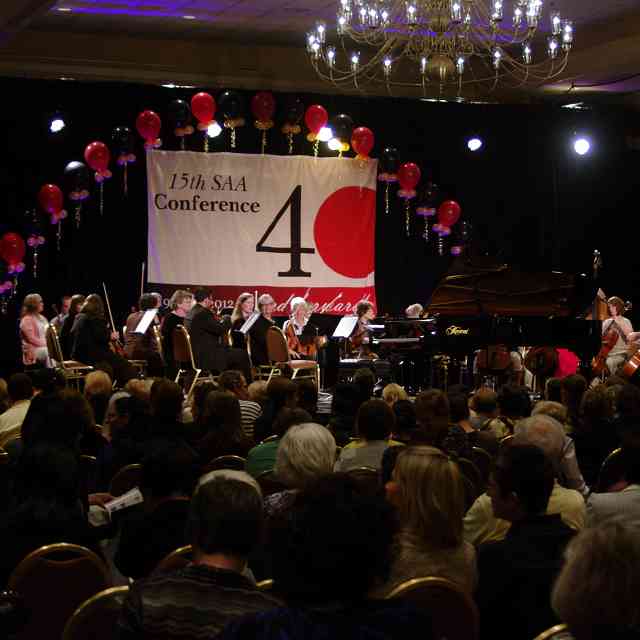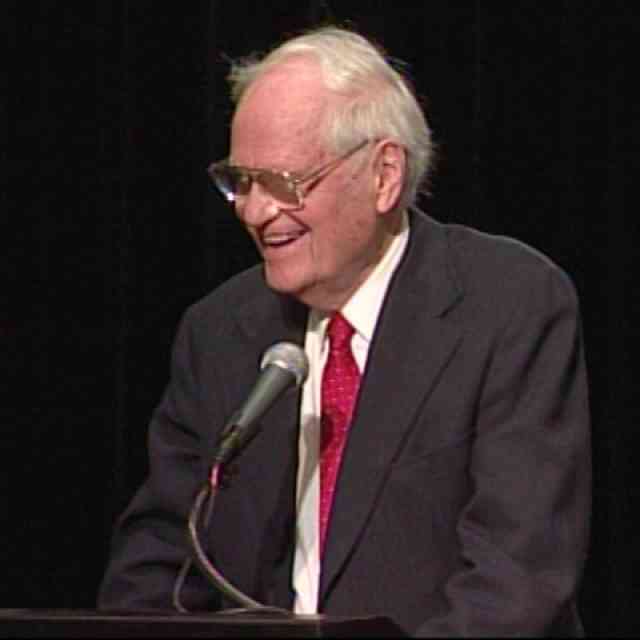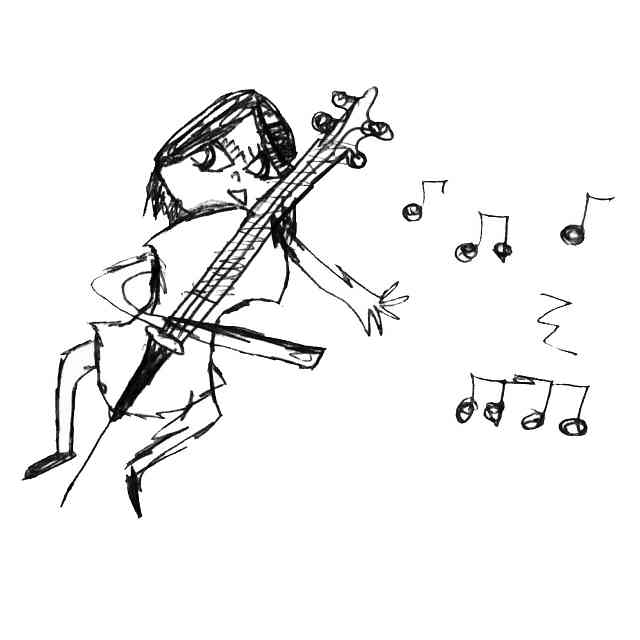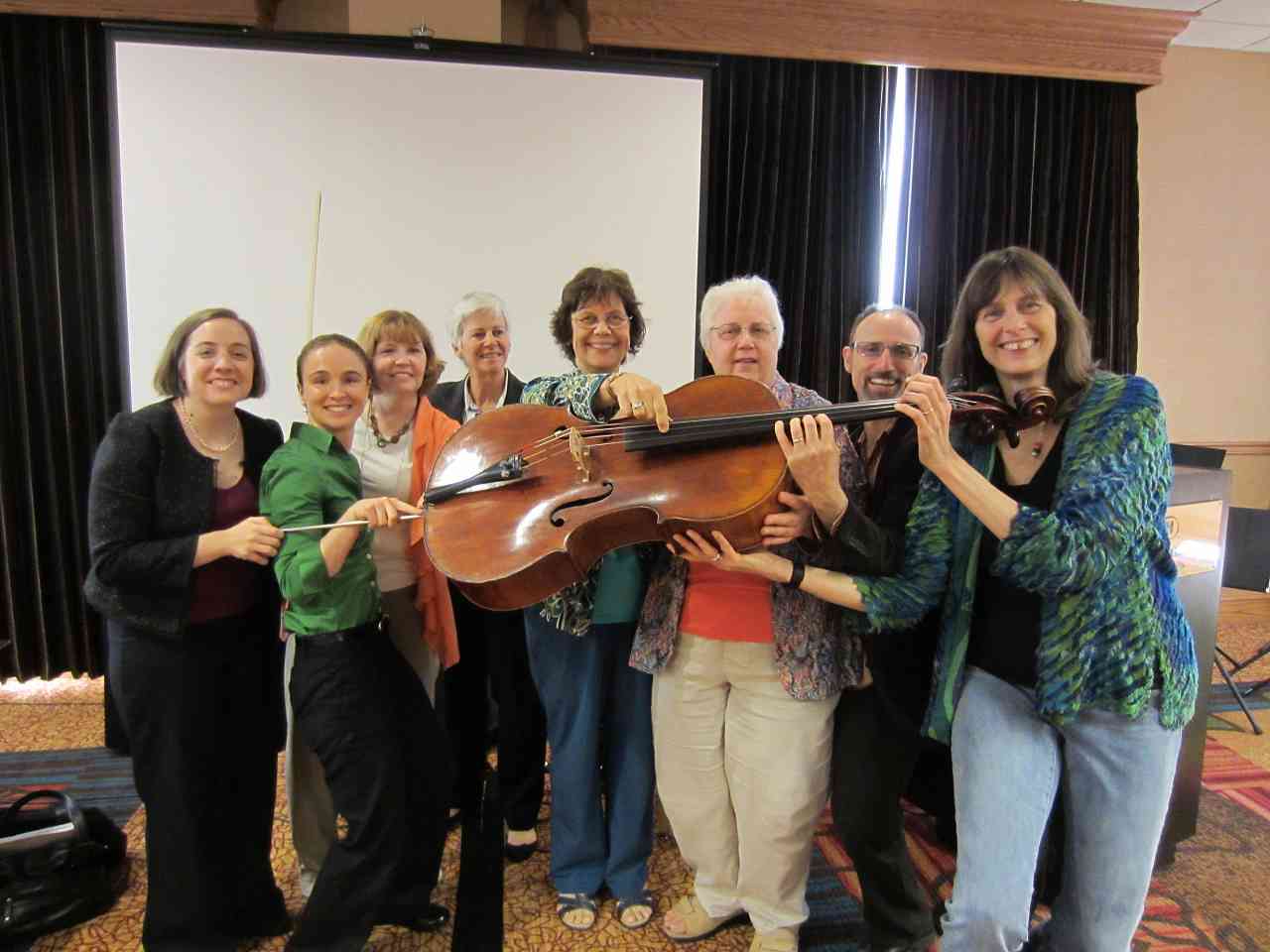
Suzuki cello teachers at the 2012 Conference
More than 110 cello teachers attended the 2012 Conference in Minneapolis. They were treated to a buffet of stimulating cello sessions.
Thursday evening, Carey Beth Hockett presented a pre-conference class sharing with us a variety of group techniques designed to mentally engage every child for the duration of a group class.
“What should we do with the older non-Suzuki student who enters our studio?” Carolyn Mead and Carol Tarr reminded us that what we do best: “Teach the listening ear” is exactly the ability that the older student needs and will enjoy developing with some thoughtful guided questions to explore the capabilities of his/her ear. Heather Watson Hardie challenged us to reconsider our personal philosophy of using tapes as pitch aids. What about setting up the left hand for ease of motion and at the same time use many games and stories to help the child find good pitch? It takes much longer to learn Twinkle, but she feels the benefits far out-weigh the disadvantages.
One of the themes of our conference was exploring the music of Bach in and outside of our books. David Evenchick and Dr. Sera Smolen beautifully and humorously demonstrated the problems of original manuscripts and the succeeding historical editions. One great feature of David’s handout was an outline of Suzuki literature which will help prepare the student for the first suite. Dr. Timothy Mutschlecner and Barbara Balatero provided us with ideas to teach our students fingerboard awareness, note-reading ability, keys and key signatures from a cello fingerboard perspective. Pamela Devenport directed our attention to the fascinating inner workings of the left and right thumbs and how to build the flexibility and strength of each one.
Tanya Carey beautifully summarized the techniques of the right and left hands/arms that are taught in the Suzuki Books 1-3. When these techniques are well-learned, they will ably set up the student to play the repertoire in the rest of the books! Tanya also challenged us to look at each child not as “our student,” but as a child possessing an “artistic mind and spirit” whom we are nurturing over a long period of time, much like the Turkish women who painstakingly knot and weave each thread into a carpet full of rich colors and beautiful designs.
What happens to teens when they reach those busy years? Gilda Barston and Nancy Hair gave us interviews with students and parents and a list of helpful ideas to keep them mentally, socially and musically challenged. Renata Bratt suggested that we can start to teach the root of the chords of Book One songs soon after they have learned the melodies. Then, when they become intermediate students, they can learn the full chords. This way we can develop the ear harmonically as well as melodically and in addition, they will have fun accompanying other students.
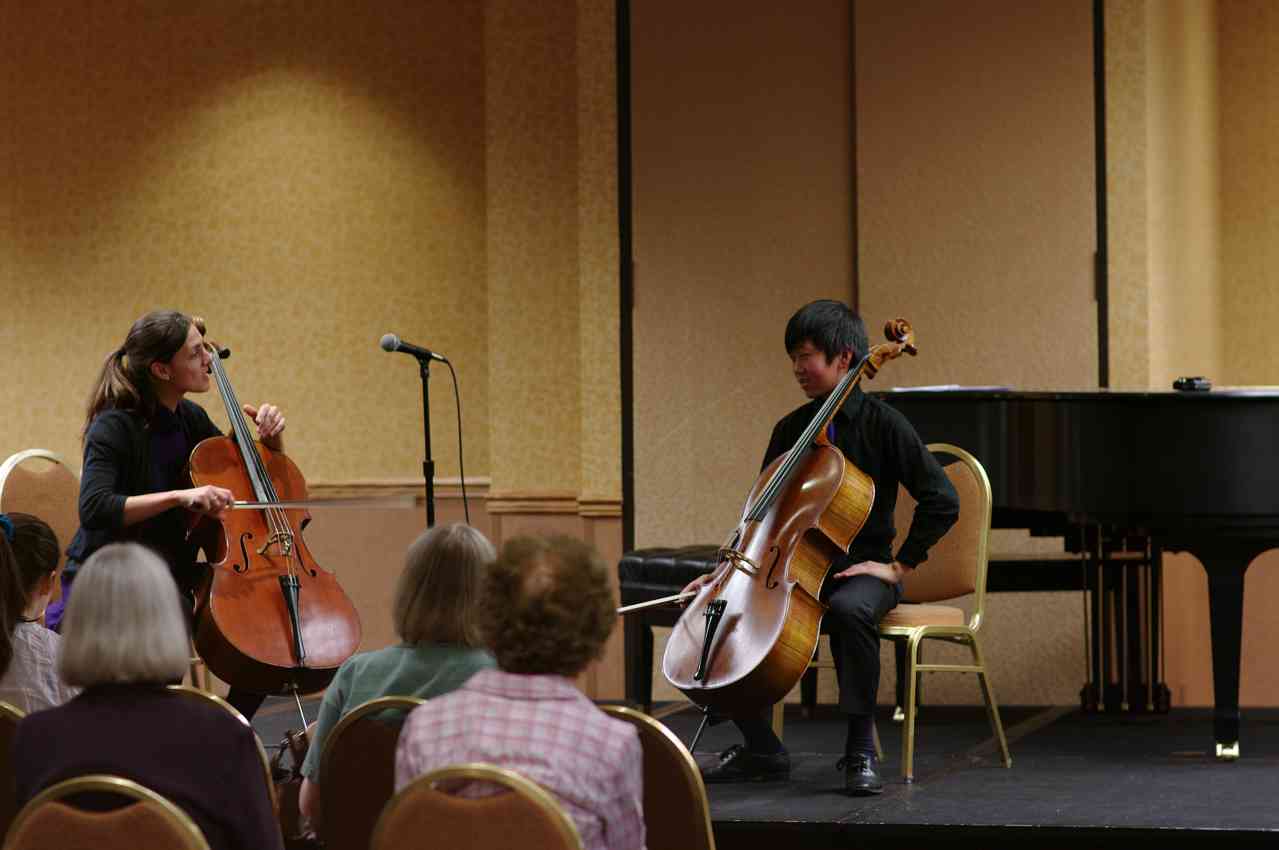
Cello master class with Julie Albers
On Saturday, Julie Albers, our clinician, sensitively interacted with our six master class students affirming their strengths, demonstrating ideas, and asking questions to expand their expressivity, tone, or musical concepts. At noon Julie gave an absolutely beautiful performance of Bach’s Suite No. 3 for Solo Cello.
On Monday, Dr. Lisa Caravan and Abigail McHugh–Grifa addressed some significant questions:
Do our students (even the young ones) play expressively? Do they know what it means to play expressively? How can we help them understand and play musically early on? Lisa and Abigail demonstrated many practical techniques and ideas to achieve these goals.
I, and hopefully many others, went home richer for the experience of being in the sharing SAA atmosphere of beauty, creativity and imagination. If you missed the conference, you can go to the SAA web site and download the handouts of each of these fabulous sessions.


